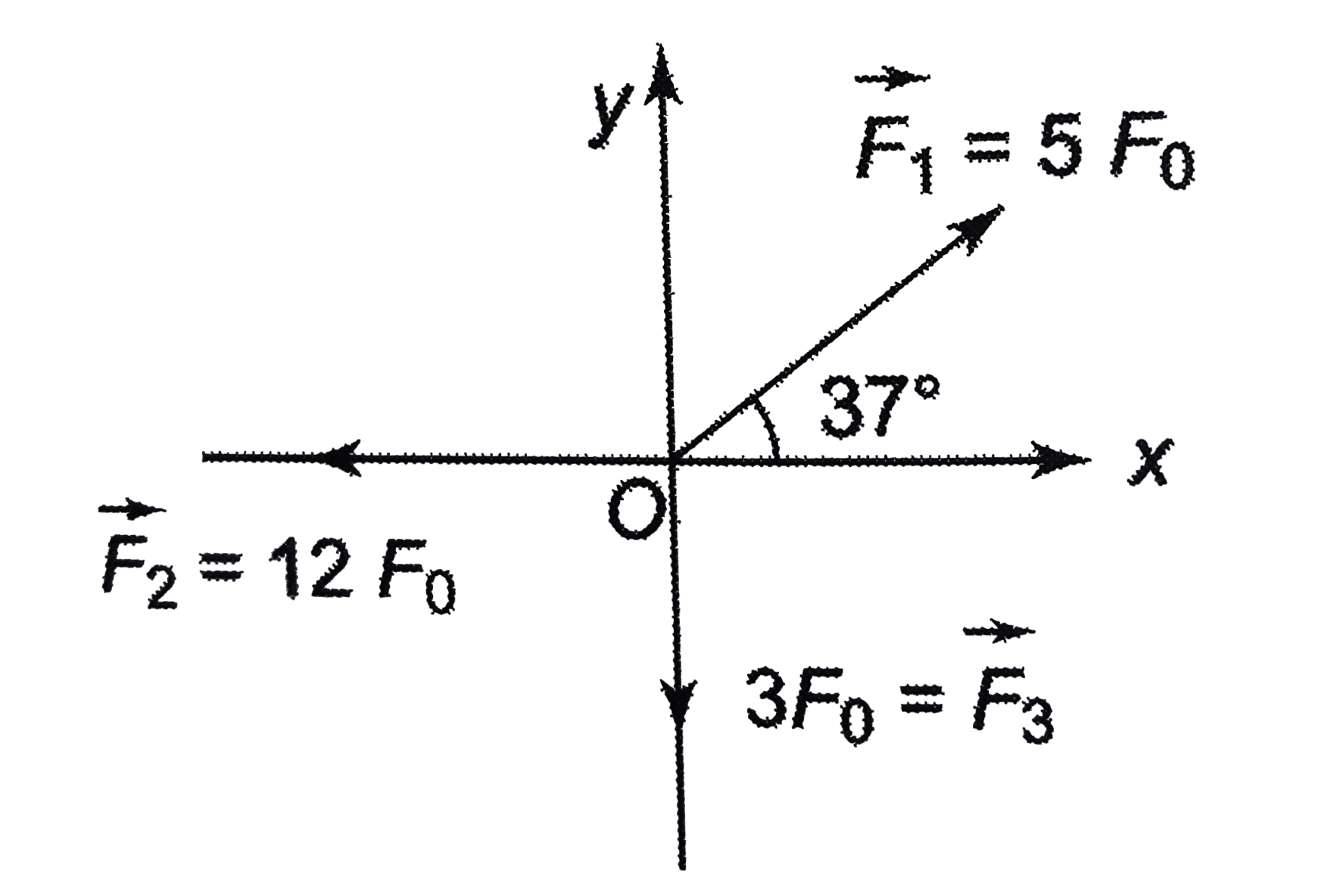A moving perticle of mass m is acted upon by five forces →F1,→F2,→F3,→F4 and →F5. Forces →F2 and →F3 are conservative and their potential energy funcations are U and W respectively. Speed of the particle changes from Va to Vb when it moves from position a to b. Choose the correct option :
Sum of work done by →F1,→F4 and →F5=Ub−Ua+Wb−Wa
Sum of work done by →F1,→F4 and →F5=Ub−Ua+Wb−Wa+12m(V2b−V2a)
Sum of work done by all five forces =12m(V2b+V2a)
Sum of work done by →F2 and →F3=(Ub+Wb)−(Ua+Wa)
The correct Answer is:B
Step by step video, text & image solution for A moving perticle of mass m is acted upon by five forces overset(vec)(F_(1)),overset(vec)(F_(2)),overset(vec)(F_(3)),overset(vec)(F_(4)) and overset(vec)(F_(5)). Forces overset(vec)(F_(2)) and overset(vec)(F_(3)) are conservative and their potential energy funcations are U and W respectively. Speed of the particle changes from V_(a) to V_(b) when it moves from position a to b. Choose the correct option : by Physics experts to help you in doubts & scoring excellent marks in Class 12 exams.
Similar Questions
A moving particle of mass m is acted upon by five forces→F1,→F2,→–––(F)3,→F4 and →F5. Forces →F2 and →F3 are conservative and their potential energy functions are U and W respectively. Speed of the particle changes from Va to Vb when it moves from position a to b. Which of the following statement is/are true – (a) Sum of work done by →F1,→F4 and →F5=Ub−Ua+Wb−Wa
(b) Sum of work done by →F1,→F4 and →F5=Ub−Ua+Wb−Wa+12m(V2a−V2a)
(c) Sum of work done by all five forces =12m(V2b−V2a)
(d) Sum of work done by →F2 and →F3=(Ub+Wb)−(Ua+Wa)View SolutionFind the resultant of −→F1+−→F2−−→F3(sin37∘=35,cos37∘=45)
 View Solution
View Solution
Knowledge Check
- Question 1 - Select One
Two forces −→F1and−→F2 are acting at right angles to each other , find their resultant ?
A√F21−F22B√F21+F22C√(F1+F2)DF1+F2 - Question 2 - Select One
When force −→F1,−→F2,−→F3…...−→Fn act on a particle , the particle remains in equilibrium . If −→F1 is now removed then acceleration of the particle is
A−→F1mB−−→F1mC−−→F2+−→F3+.....−→Fn−−→F1mD−→F1m - Question 3 - Select One
A body placed in free space, is simultaneously acted upon by three forces −→F1,−→F2 and −→F3. The body is in equilibrium and the forces −→F1 and −→F2 are known ot be 36 N due north and 27 N due east respectively. Which of the following best describes the force −→F3?
A36N due southB53N due 60∘ south of eastC45N due 53∘ south of westD45N due 37∘ north of west.
Two particles A and B, move with constant velocities →v1 and →v2. At the initial moment their position vectors are →r1 and →r2 respectively. The condition for particle A and B for their collision is
View SolutionIf →F is force vector, →v is velocity , →a is acceleration vector and →r vector is displacement vector w.r.t. mean position than which of the following quantities are always non-negative in a simple harmonic motion along a straight line ?
View SolutionThree known forces →Fm,→F and 2→F acting on a particle along x-axis, 120∘ with + ve x-axis and 240∘ with the + ve x-axis, respectively. The particle is moving along 60∘ with +ve x-axis. Choose correct options.
View SolutionTwo particle A and B, move with constant velocities →v1and→v2. At the initial moment their position vectors are →r1 and →r2 respectively . The condition for particles A and B for their collision is
View SolutionWhen force →F1,→F2,→F3 are acting on a particle of mass m, the particle remains in equilibrium. If the force →F1 is now removed then the acceleration of the particle is :
View Solution

